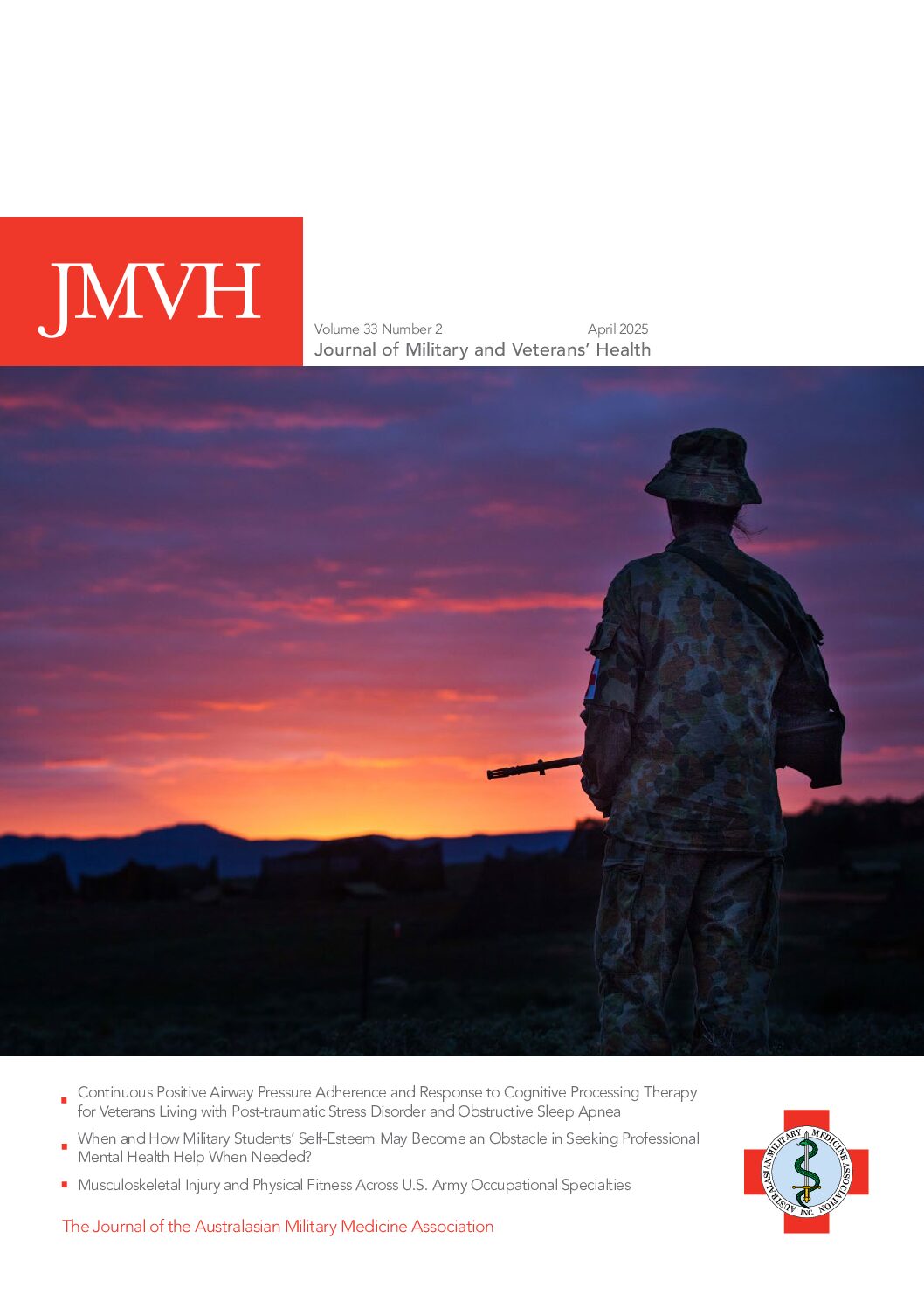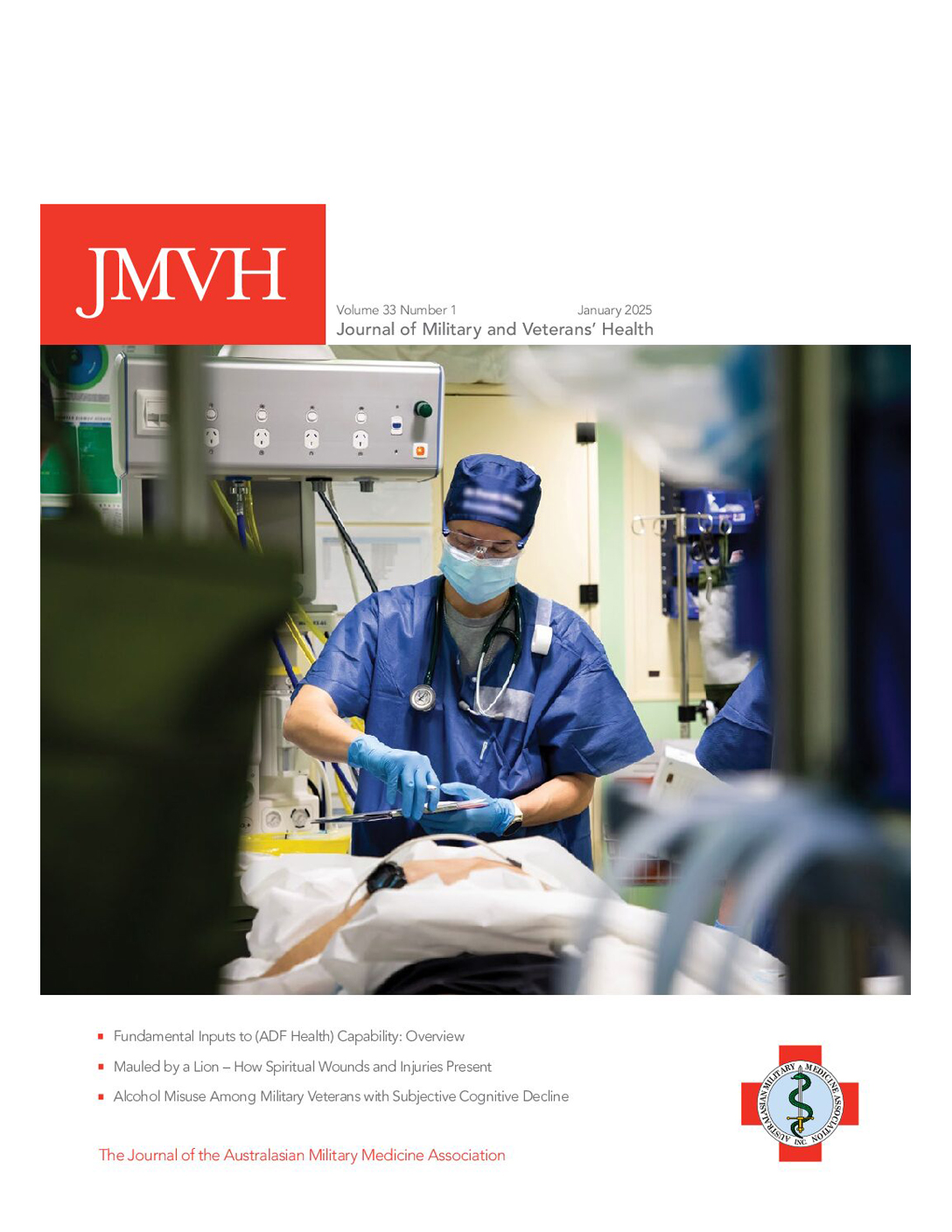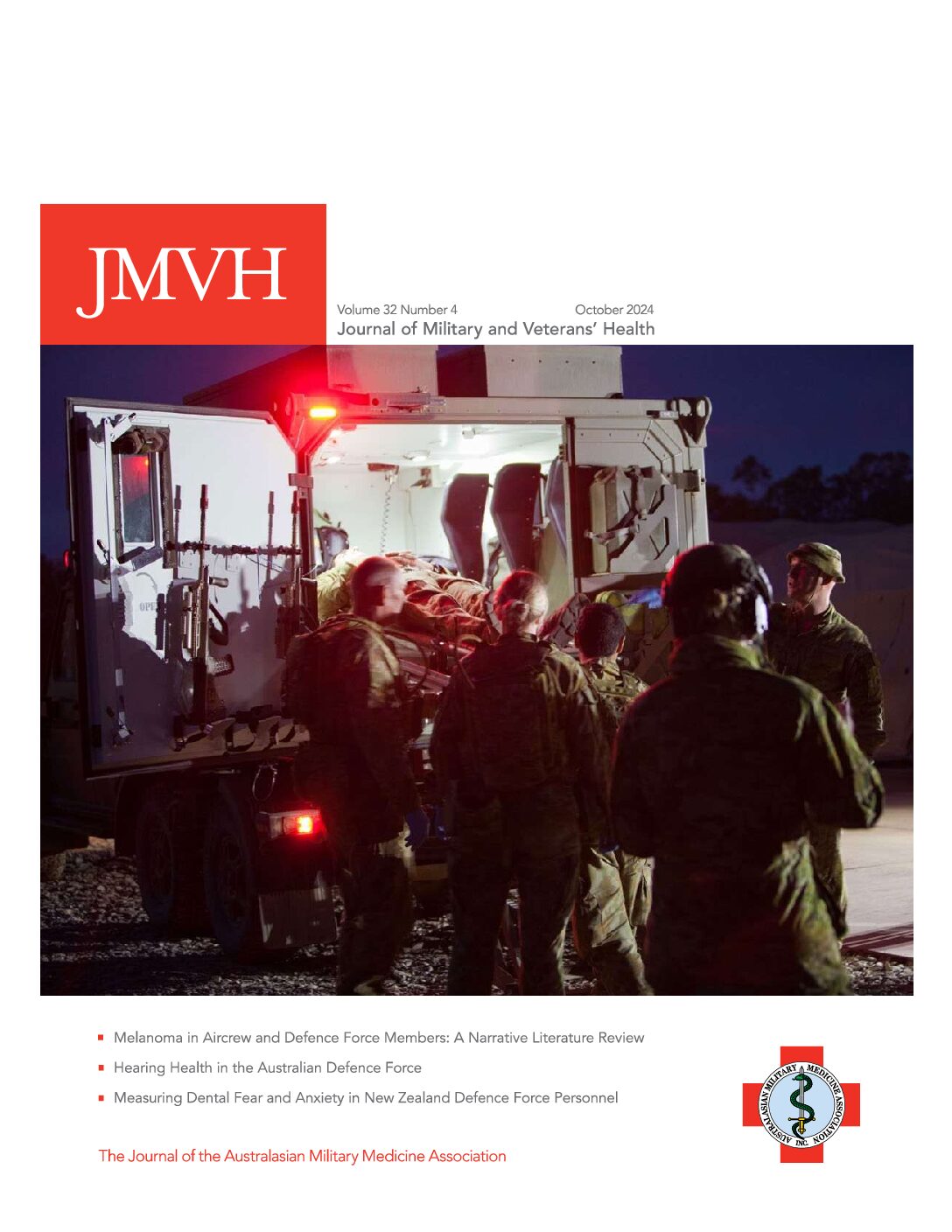Changing military medical standards—Are we doing harm?
‘I am trying to arrange transport for two or three thousand “B” class men; they are absolutely unfit for service. Many of them do not disclose any organic disease upon a carefully conducted clinical examination, but are in and out of hospital, and are quite useless for front line, and practically useless for Home Service….Far… Read more »
The Evolution of Operational Health support Provided to the United States, United Kingdom and Australian Special Operations Forces from 1940–2024
Introduction Over the last 85 years, medical support to Special Operations Forces (SOF) units has evolved from rudimentary beginnings to highly sophisticated care. While some of this evolution reflects changes in clinical medicine during that period, particularly in civilian trauma management, the progress in health support in other areas reflects the innovative forefront of military… Read more »
Assessing spiritual wounds and injuries—Some Initial Thinking
Abstract This paper aims to provide some initial thinking on determining the basis for assessment of the existence, severity, and nature of a Spiritual Wound and Injury (SW&I) within an individual. The conditions, behaviours, and Red-Actions (serious, life-threatening, harmful) actions of an SW&I discussed in an earlier paper in this journal1 require a thorough and… Read more »
Book Review—The Combat Doctor: A Story of Battlefield Medicine and Resilience, by Dan Pronk
Note: Content within this review and book regarding trauma and mental health challenges may be distressing to some people. Support is available through your Chain of Command, Chaplaincy, Health Centre, Lifeline 13 1144 or Open Arms 1800 011 046. The Combat Doctor is a first-hand riveting account by Dr Dan Pronk of the resilience called… Read more »
Creative Engagement by Wounded, Injured or Ill Australian Defence Force Personnel
Abstract While there has long been an extensive range of medical, pharmaceutical, psychological, physiological, spiritual and physical programs available to ADF personnel seeking health assistance, allied health practices—particularly creative arts interventions—are still relatively new in the wellbeing context. The Australian Defence Force Arts for Recovery, Resilience, Teamwork and Skills Program (hereafter, ADF ARRTS) is an… Read more »
Canadian Armed Forces Members’ Perspectives on Health Service Transition Prior to Military Release
Abstract In Canada, military-to-civilian transition (MCT) involves transitioning from military to civilian primary care. This is an important but underexplored aspect of MCT. We investigated releasing military members’ perspectives on the transition from military to civilian primary care by analysing previously collected interview data from 69 Canadian military members. We found that participants were apprehensive… Read more »
JMVH ARTICLE: ‘Dual loyalty and the medical profession for Australian Defence Force medical officers’
To the Editor, The October 2022 JMVH article regarding Australian Defence Force (ADF) medical officers’ dual loyalty to military patients and commanders1 is important because, aside from their conduct in extreme circumstances, it also pertains to how they perform their day-to-day clinical and other duties. While commending the author’s work to that end, it requires further… Read more »
Reply: A valuable historic perspective
Thank you for your interest in and reflection on ‘Dual loyalty and the medical profession for Australian Defence Force Medical Officers’ published in the JMVH October 2022 issue.1 The elaboration regarding Bulter’s civilian transition mandate is valuable and reconciles well with considerations of dual loyalty in military medical settings. Dual loyalty scenarios are abundant in… Read more »
Psychological Coping Mechanisms in Military Physicians: A Qualitative Exploration of Stress Management Strategies
Background: This qualitative study investigates the coping strategies utilised by military physicians facing the dual demands of military service and healthcare provision. Recognising the unique stressors within this professional context, the study aims to identify both adaptive and maladaptive coping mechanisms employed by military physicians. Methods: A purposive sample of 18 military physicians from diverse… Read more »
Efficacy of yoga for managing sleep problems among military veterans: A systematic review and meta-analysis
Purpose Yoga is considered a potential alternative treatment for sleep disorders in military veterans. This study aims to conduct a systematic review and meta-analysis to critically assess the best available evidence on yoga’s effects in managing sleep problems among military veterans. Material and methods A systematic search was conducted across four electronic databases (Scopus, Web… Read more »
Effects of Lighting Conditions on Psychophysiological Re-sponses and Motor Skills in Warfighters During Close Quarter Combat Simulations
Abstract: This study examines the impact of lighting conditions (darkness, rotational light and continuous light) on warfighters’ psychophysiological responses and fine motor skills in close-quarter combat (CQC) simulations. The study assessed the rate of perceived exertion, blood lactate concentration, cortical arousal, isometric lumbar and leg strength, and the time required to reload a pistol magazine… Read more »
Importance of the Spleen to Survival from P falciparum
Abstract: P falciparum infections carry a considerable mortality risk, but the nature of the ‘immunity’ gained from infection experience is uncertain. Although anaemia may contribute some protection against mortality, the function of the spleen appears critical to controlling P falciparum parasitemia and increasing survival. Melanesian reports suggest that survival advantages of P vivax infections and… Read more »
Needed Evolution in Afloat Teleradiology and Imaging Capabilities
Introduction The concept of telemedicine dates back nearly 120 years, when William Einthoven won the Nobel Prize for transmitting the first EKG via telephone over 1.5 km.1 Teleradiology has since evolved to allow specialists to review medical imaging remotely, facilitating faster and higher-quality patient care.2 While ordering physicians can provide preliminary reads, the American College… Read more »
Stuart Naval Warfare, Ships and Medicine 1603–1714
Introduction Previous articles in this series described the development of a cycle from prehistory to the end of the Tudor period, whereby increasing maritime trade necessitated larger and more efficient ships to transport merchandise and better weapons to defend or attack them, facilitating further trading opportunities.1,2,3,4,5,6,7 However, it was not until the 18th century that… Read more »






